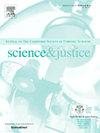枪械弹丸回收技术:牛仔布弹丸穿孔过程中粘附的纺织纤维保留率的对比研究
IF 2
4区 医学
Q2 MEDICINE, LEGAL
引用次数: 0
摘要
微量证据在法医重建中起着至关重要的作用,特别是当涉及弹丸撞击过程中转移的微观物质时。本研究研究了蓝色牛仔裤纤维与9毫米口径弹丸的粘附性,评估了六种弹丸收集方法——填充棉花的PVC管、填充棉花废物的PVC管、水箱、防弹背心板(凯夫拉®)、纸板和防弹板的组合以及摩托车轮胎与防弹板的组合——并比较了两种弹药类型:空心点(HP)和全金属护套(FMJ)。数码显微镜使高分辨率、非破坏性的纤维粘附分析成为可能。HP弹丸在94.4%的病例中保留了蓝色牛仔裤纤维,显著高于FMJ弹丸(22.2%),具有高度显著的相关性。纤维的存在最常被观察到在弹丸尖端和HP腔内。使用棉花的屏障为纤维保存和最小的视觉污染提供了最佳条件,而水箱导致HP弹丸破碎,其他材料导致相当大的变形和视觉污染,阻碍了分析。这些发现证实了高压弹丸保留微量痕迹的优越能力,并确立了棉填充PVC管作为弹道证据恢复的有效方法。因此,建议在涉及纺织品微迹分析的弹道试验中使用空心弹丸结合棉填充PVC管收集技术。该研究还强调,没有可见纤维不应被解释为缺乏织物相互作用。本文章由计算机程序翻译,如有差异,请以英文原文为准。
Firearm projectile collection techniques: A comparative study on the retention of textile fibers adhered during projectile perforation of denim fabric
Trace evidence plays a critical role in forensic reconstructions, especially when involving microscopic materials transferred during projectile impacts. This study investigated the adherence of blue jeans fibers to 9 mm caliber projectiles, evaluating six projectile collection methods—PVC tube filled with cotton, PVC tube filled with cotton waste, water tank, ballistic vest plates (Kevlar®), combination of cardboard and ballistic plates, and motorcycle tire combined with ballistic plates—and comparing two ammunition types: hollow-point (HP) and full metal jacket (FMJ). Digital microscopy enabled high-resolution, non-destructive analysis of fiber adherence. HP projectiles retained blue jeans fibers in 94.4 % of cases, significantly more than FMJ projectiles (22.2 %), with a highly significant association. Fiber presence was most frequently observed at the projectile tip and within the HP cavity. Barriers using cotton provided optimal conditions for fiber preservation and minimal visual contamination, whereas water tanks caused fragmentation in HP projectiles and the other materials resulted in considerable deformation and visual contamination, hindering analysis. These findings confirm the superior capacity of HP projectiles to retain microtraces and establish cotton-filled PVC tubes as an effective method for ballistic evidence recovery. Therefore, the use of hollow-point projectiles combined with the cotton-filled PVC tube collection technique is recommended for ballistic tests involving textile microtrace analysis. The study also emphasizes that the absence of visible fibers should not be interpreted as a lack of fabric interaction.
求助全文
通过发布文献求助,成功后即可免费获取论文全文。
去求助
来源期刊

Science & Justice
医学-病理学
CiteScore
4.20
自引率
15.80%
发文量
98
审稿时长
81 days
期刊介绍:
Science & Justice provides a forum to promote communication and publication of original articles, reviews and correspondence on subjects that spark debates within the Forensic Science Community and the criminal justice sector. The journal provides a medium whereby all aspects of applying science to legal proceedings can be debated and progressed. Science & Justice is published six times a year, and will be of interest primarily to practising forensic scientists and their colleagues in related fields. It is chiefly concerned with the publication of formal scientific papers, in keeping with its international learned status, but will not accept any article describing experimentation on animals which does not meet strict ethical standards.
Promote communication and informed debate within the Forensic Science Community and the criminal justice sector.
To promote the publication of learned and original research findings from all areas of the forensic sciences and by so doing to advance the profession.
To promote the publication of case based material by way of case reviews.
To promote the publication of conference proceedings which are of interest to the forensic science community.
To provide a medium whereby all aspects of applying science to legal proceedings can be debated and progressed.
To appeal to all those with an interest in the forensic sciences.
 求助内容:
求助内容: 应助结果提醒方式:
应助结果提醒方式:


